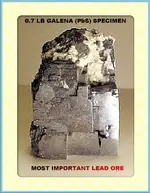Daryl Friesen
Sr. Member
- Joined
- Mar 21, 2003
- Messages
- 339
- Reaction score
- 97
- Golden Thread
- 0
- Location
- Vancouver,British Columbia
- Detector(s) used
- Whites GMT
- #1
Thread Owner
From looking at the rock sample below. Can anyone tell me more about what type of minerals make up this rock. I have several ideas but would like some input from some of you other prospectors out there. It comes from one of the lost mine of Pitt Lake search areas.
www.spindlequest.com/lostmine.html

www.spindlequest.com/lostmine.html







